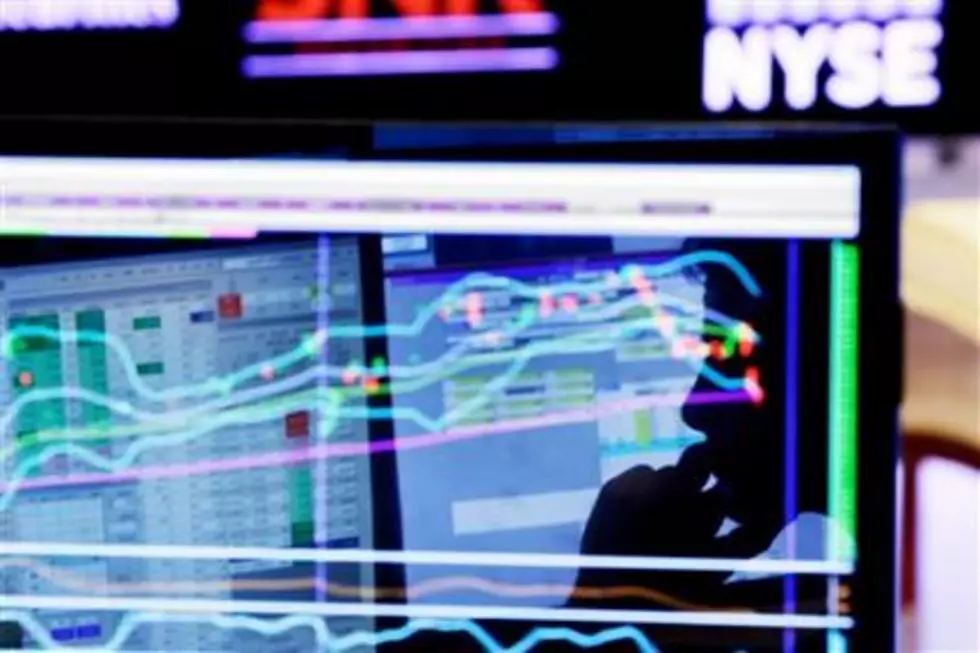
Some funds offer to tame market’s chaos, but at a price
Freaked out by the stock market's big swings?
Then the investment industry has something it built just for you: funds that hope to offer a steadier ride. That sounds especially comforting after this year's jarring start for markets, in which drops of more than 1 percent have become typical. But be careful, the funds carry their own risks.
These mutual funds and exchange-traded funds own stocks that could charitably be described as boring. Think utilities, telecoms and other companies whose profits -- and thus stock prices -- don't fluctuate so much. The funds avoid jack-rabbit stocks that tend to have either really good or really bad days.
These funds advertise themselves by including terms like "low volatility" or something similar in their names, and fund companies have rolled out dozens of them in the last five years to meet strong demand. Older investors approaching retirement or already retired are particularly drawn to them. The ALPS Sector Low Volatility ETF, which trades under the symbol "SLOW," began trading in July, for example.
The problem, for now at least, is that the types of stocks these funds own have uncertain outlooks. Many are at risk of falling if interest rates rise, and the expectation is for the Federal Reserve to continue raising its benchmark rate. And many have already been bid up to heights that look pretty thrilling for supposedly boring companies.
"You've gotten to a point where they're trading at higher valuations than a market that's already expensive," says Doug Ramsey, chief investment officer at the Leuthold Group.
Six years ago, an index of the 100 least-volatile stocks in the S&P 500 was 13 percent cheaper than the broad index. But at the start of this year, it was the mirror image. The S&P 500 Low Volatility index was 13 percent more expensive than the S&P 500.
If investors have already paid up for the perceived safety that the low-volatility index offers, Ramsey says, it "may fail to live up to its moniker in the weeks and months ahead."
Many low-volatility funds focus on dividend-paying stocks, which tend to have steadier returns. They've grown popular in recent years because investors have been hungry for income at a time of super-low interest rates. The fear is that when rates rise, income investors will go back to bonds and dump their dividend-paying stocks.
"Everyone is investing in stocks that look `low risk' based on history," says Jim Fallon, who runs low-volatility mutual funds at MFS Investment Management. "That leads to a lot of crowding in this space. Everyone is buying the same stocks."
For example, Procter & Gamble has been a relatively steady stock in part because investors think people will continue buying Bounty paper towels and Pampers diapers even if the economy falls into a recession. But that has made it popular -- maybe too popular. Its shares are trading at nearly 30 times their earnings per share, close to the highest level in 13 years. The S&P 500 as a whole trades at 16 times earnings.
That's why Fallon is considering stocks that rival low-volatility funds may not be. For example, many funds invest in only the 10 or 20 percent of stocks that have had the mildest price swings in the S&P 500 or another index over a certain time period. At his MFS Low Volatility Equity fund, Fallon considers any stock as long as it's in the bottom 60 percent of the 1,000 largest U.S. stocks in terms of volatility.
The biggest catch in low-volatility investing, Fallon says, lies in the time commitment that it requires. He wants his funds to lose less when the market is tumbling, but they will also tend to rise less when stocks are doing well. So anyone who gets frustrated by slow gains during the good times and jumps out would miss out on the protection offered during the bad times.
"You have to be patient and disciplined," he says. "You can't put it in and pull it out if you're disappointed after a year."
(Copyright 2016 The Associated Press. All rights reserved. This material may not be published, broadcast, rewritten or redistributed.)
More From New Jersey 101.5 FM









